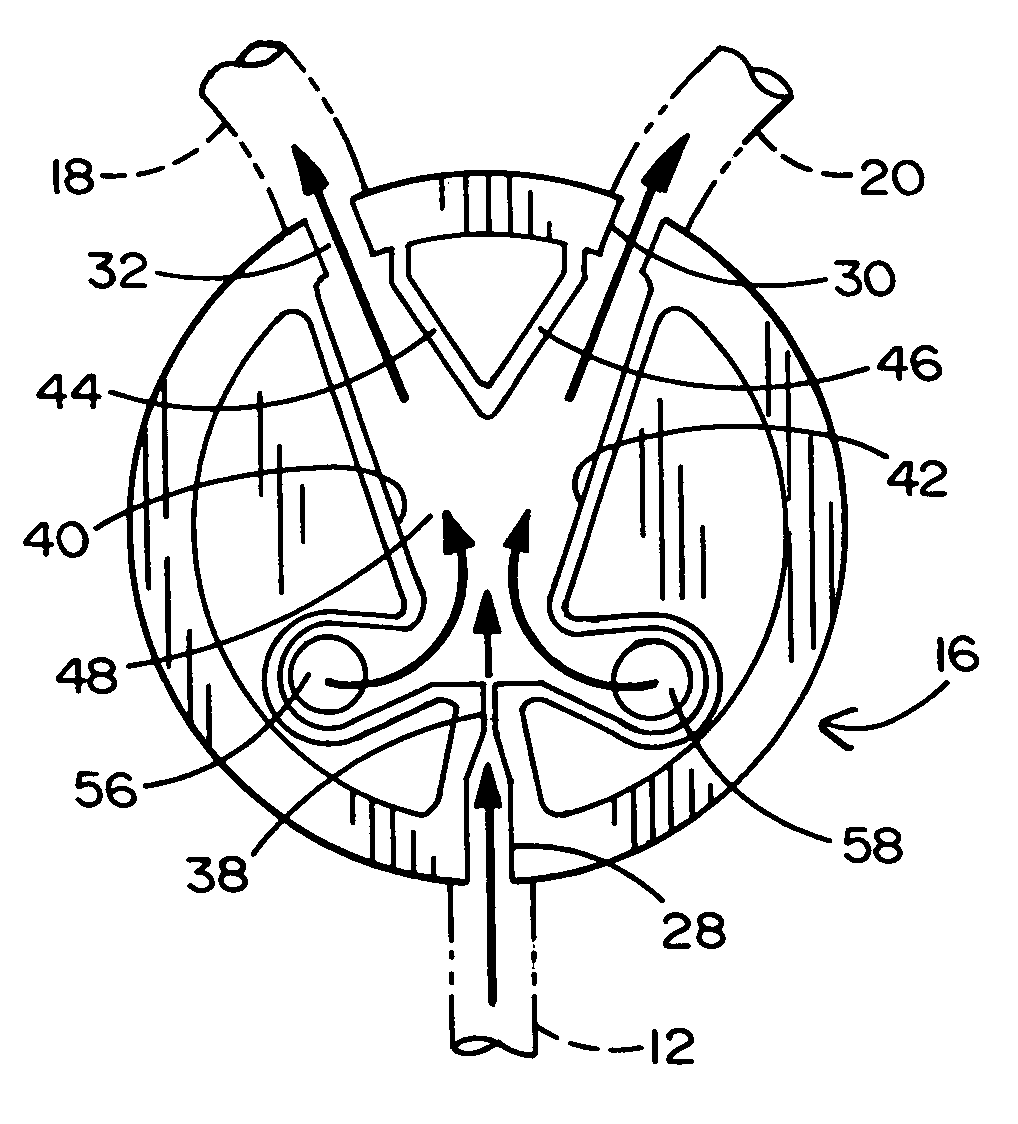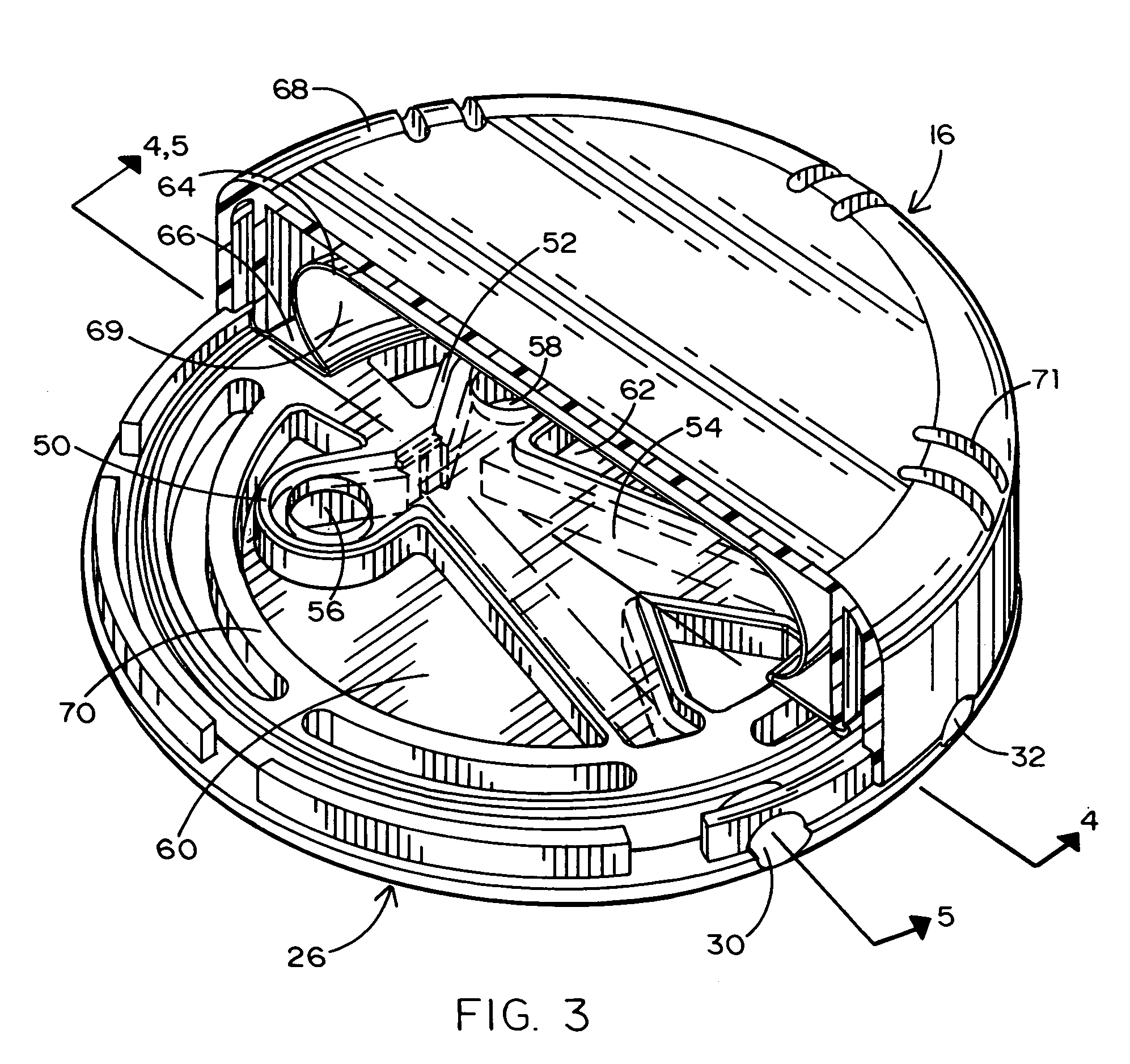Oxygen delivery cannula system that improves the effectiveness of alveolar oxygenation
a cannula system and oxygen delivery technology, applied in the direction of inhalators, circuit elements, other medical devices, etc., can solve the problems of difficult to leave the home, limited oxygen supply for patients on long-term home oxygen, and dangerous tissue hypoxia,
- Summary
- Abstract
- Description
- Claims
- Application Information
AI Technical Summary
Benefits of technology
Problems solved by technology
Method used
Image
Examples
Embodiment Construction
[0019]The oxygen delivery cannula system of this invention is generally indicated at 10 in FIG. 1. It includes an oxygen supply tube 12 which is connected by fitting 14 to a continuous source of gaseous oxygen under pressure. The supply tube 12 is connected to pendant structure 16, the structure of which is described in detail below. Outlet tubes 18 and 20 receive oxygen from the pendant structure and are connected to the ends of nasal cannula 22. The nasal cannula 22 delivers gaseous oxygen to the patient 24, shown in dashed lines.
[0020]As seen in FIGS. 3, 4, and 5 the pendant structure 16 is formed of three substantially rigid parts made of injection moldable synthetic polymer composition material, and a flexible reservoir. Bottom panel 26 is the lower most panel in the pendant structure assembly. It is substantially circular in outline and is formed with a plurality of spaces and walls for various functional purposes. Its underside lies against the user's chest. Inlet opening 28 ...
PUM
 Login to View More
Login to View More Abstract
Description
Claims
Application Information
 Login to View More
Login to View More - R&D
- Intellectual Property
- Life Sciences
- Materials
- Tech Scout
- Unparalleled Data Quality
- Higher Quality Content
- 60% Fewer Hallucinations
Browse by: Latest US Patents, China's latest patents, Technical Efficacy Thesaurus, Application Domain, Technology Topic, Popular Technical Reports.
© 2025 PatSnap. All rights reserved.Legal|Privacy policy|Modern Slavery Act Transparency Statement|Sitemap|About US| Contact US: help@patsnap.com



